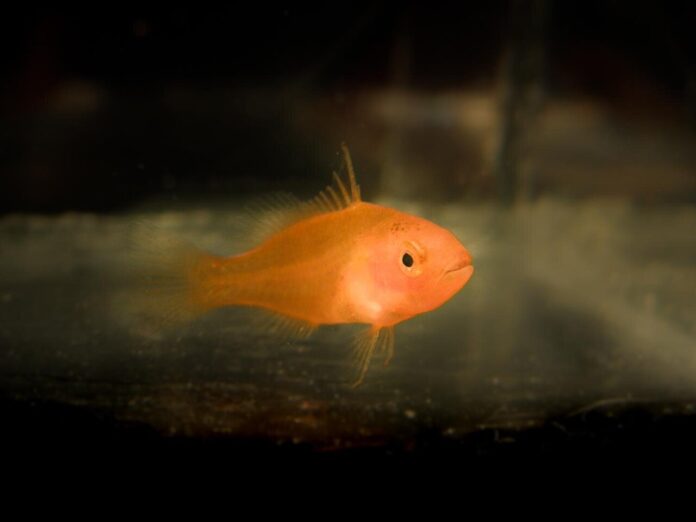Last Updated on March 2, 2024 by Fumipets
Don’t be alarmed if you discover young fish in your aquarium. Remove any adult fish from the tank so they don’t consume the young, or transfer the baby fish to a separate tank where they may develop in a safe environment.
Step 1
Using a mesh net, remove any adult fish from the aquarium and transfer the young fish to a separate rearing tank. Many fish species will consume their own young, and even if the parents do not, other fish in the tank may do so. Instead of using a net to transport young fish, gently scoop them up in a cup.
Step 2
Install a sponge filter in your rearing tank to help with water flow while avoiding generating suction that may damage the young fish. Sponge filters assist keep the tank clean by providing moderate mechanical and biological filtering.

Step 3
After your baby fish has just hatched, feed them a few drops of infusoria, a liquid fry meal, using an eyedropper several times a day. Your young fish will be able to consume Infusoria since it is tiny enough.
Step 4
If you don’t have any other choices for fry food, crush some flake food into powder. Dip the end of a toothpick in water and then into the powder to deliver the meal. To release the food, submerge the tip of the toothpick in the aquarium near your young fish.

Step 5
Feed your young fish many times a day with tiny quantities of food. Your fish’s initial few weeks of existence are crucial; if they have adequate food, they will develop rapidly.
Step 6
Once your young fish are big enough to consume them, raise some brine shrimp eggs to give to them. Fry from livebearers are born fully developed and can often feed young brine shrimp straight away. After hatching, egg carrier fry are usually smaller and may need to develop for a week or two before accepting newborn brine shrimp.

Step 7
Use a submersible aquarium heater to keep the water temperature in your tank constant. Find out what temperature your baby fish like in their tank and adjust the heater’s heat control to that temperature.
Step 8
Several times a week, do minor water changes in your raising tank. To keep your fry safe, generate suction by syphoning solid waste from the bottom of the tank using aquarium airline tubing.

Step 9
When the fry reaches a half-inch size, divide them into separate rearing aquariums. This may not be required for species that mature to be 1 to 2 inches long. Providing additional room for your fish can aid in their healthy development while also ensuring that the tank does not become overcrowded.
Step 10
When your young fish reach 1 inch in size, either sell them or release them back into your main tank. If your baby fish is a big species, you should wait until they are one-fourth to half their adult size before selling them. If your tank contains big or carnivorous fish, make sure the fry are large enough to avoid being eaten before returning them to the tank.
https://www.youtube.com/watch?v=4Dhbk94n6jQ


















